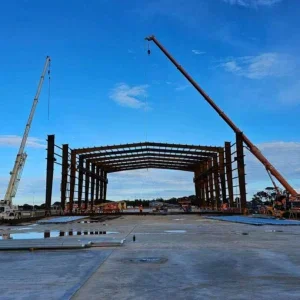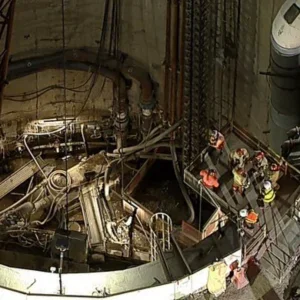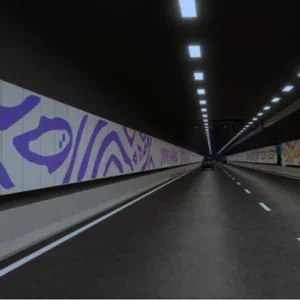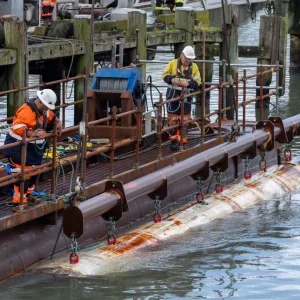Construction of Hong Kong’s deep tunnel sewage collection system, part of the US$1.05bn first phase of the strategic sewage disposal scheme, has finally been completed millions of dollars over budget and over four and a half years late.
The 24km tunnel network, built up to 150m below ground, runs from the eastern side of Hong Kong Island and Hong Kong’s eastern New Territories across the Kowloon peninsular to a treatment works at Stonecutters Island. There is also a western leg from Tsing Yi.
But work on the project was dogged by contract rows between the initial contractor, a JV between Campenon Bernard of France and Maeda Corporation of Japan (CBM), and the government, ending in the government’s sacking of CBM in December 1996. Earlier this year, CBM agreed to pay the government US$96m in compensation after losing a series of arbitrations held to settle the rows.
Replacement contractors, Skanska, Gammon–Kvaerner and Paul Y–Seli, suffered delays as a result of the poor ground conditions, machinery breakdowns and industrial accidents.
As a result the cost of the tunnels ballooned from US$166m when the contracts were placed in 1994, to about US$385m, according to government estimates. Costs could escalate further once the contractors’ final accounts have been settled by the government.
The delays impacted on the construction programme. So, while the rest of the phase one scheme, including treatment and sewage pumping plants and an outfall, was completed by the May 1997 deadline, the tunnels were only completed and commissioned in mid-December.
Recognising the problems, John Collier, Drainage Services Department (DSD) director, said: "Like all major underground engineering projects, the deep tunnels met a number of challenges during construction."
Speaking at a tunnel commissioning ceremony at Skanska’s Tsing Yi site on December 10, he added: "The work involved has been both extensive and challenging and we have successfully completed a world class piece of infrastructure which will serve our community for many generations to come."
Mr Collier said lessons learnt during tunnel construction would be used during construction of future phases of the tunnel scheme.
Recently, US engineering firm, Camp Dresser McKee International (CDM) was appointed by the Environmental Protection Department (EPD) to study four alternative plans for the next stage.
These involve tunnels along the northern and western shore of Hong Kong Island that will link up with the newly commissioned system.
The CDM study is one of five investigations the drainage services and environmental protection departments plan to carry out.
Mr Collier said it would be "three to four years before construction starts" on these future stages.







